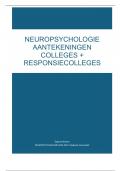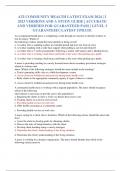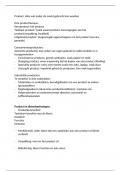College aantekeningen
College aantekeningen en reponsiecollege aantekeningen - Neuropsychologie/Neuropsychology SOW-PWB2240
- Instelling
- Radboud Universiteit Nijmegen (RU)
In het document staan alle aantekeningen van de hoorcolleges en responsiecolleges van neuropsychologie . Ik heb afbeeldingen toegevoegd om de stof wat begrijpelijker te maken. De aantekeningen zijn vooral in het Engels, maar hier en daar zal wat Nederlandse tekst te vinden zijn. Ook heb ik een ...
[Meer zien]






